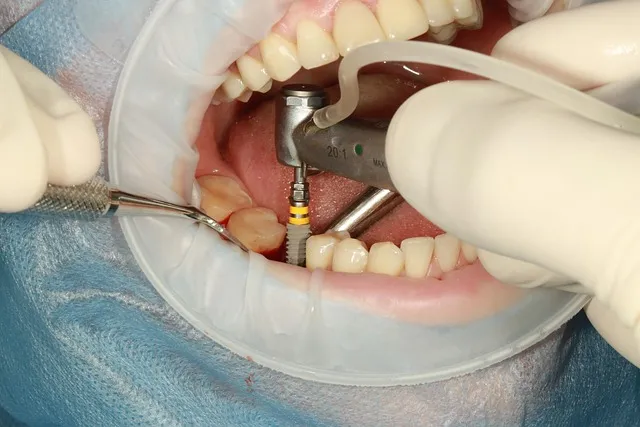High-intensity focused ultrasound (HIFU) is a non-invasive and non-surgical medical technology that uses ultrasound waves to deliver targeted energy to specific areas of the body. It has gained popularity recently for its ability to treat various medical conditions, including cancer, uterine fibroids, and prostate enlargement. HIFU treatments have also become increasingly popular in the beauty industry, as they can tighten and lift sagging skin, reduce the appearance of wrinkles, and even contour the body. This blog post will explore the science behind HIFU facial treatments, how they work, and the different medical and cosmetic applications for this innovative technology. We will also discuss the benefits and potential risks of HIFU treatment and how to determine if this treatment is right for you. A HIFU facial, as the name implies, employs ultrasonic energy to tighten the skin, providing it with a relatively non-invasive and painless treatment. The energy utilized stimulates the creation of collagen, resulting in the firmer, tighter skin you've always wanted.A HIFU facial is a non-surgical facelift or non-invasive facial skin tightening treatment. A HIFU facial is an excellent skin-tightening procedure that can help slow natural aging.This concentrated ultrasonic treatment facial is superior to a surgical facelift. HIFU is excellent for reducing facial wrinkles and increasing collagen levels in the skin. It's also preferable to a surgical facelift, which is terrible and expensive. The HIFU treatment is painless and it is inexpensive.Also Read: 6 Best Yoga Poses and Exercises to Target Facial Fat
A HIFU facial, as the name implies, employs ultrasonic energy to tighten the skin, providing it with a relatively non-invasive and painless treatment. The energy utilized stimulates the creation of collagen, resulting in the firmer, tighter skin you've always wanted.A HIFU facial is a non-surgical facelift or non-invasive facial skin tightening treatment. A HIFU facial is an excellent skin-tightening procedure that can help slow natural aging.This concentrated ultrasonic treatment facial is superior to a surgical facelift. HIFU is excellent for reducing facial wrinkles and increasing collagen levels in the skin. It's also preferable to a surgical facelift, which is terrible and expensive. The HIFU treatment is painless and it is inexpensive.Also Read: 6 Best Yoga Poses and Exercises to Target Facial Fat
What is Hifu Facial Treatments?
 A HIFU facial, as the name implies, employs ultrasonic energy to tighten the skin, providing it with a relatively non-invasive and painless treatment. The energy utilized stimulates the creation of collagen, resulting in the firmer, tighter skin you've always wanted.A HIFU facial is a non-surgical facelift or non-invasive facial skin tightening treatment. A HIFU facial is an excellent skin-tightening procedure that can help slow natural aging.This concentrated ultrasonic treatment facial is superior to a surgical facelift. HIFU is excellent for reducing facial wrinkles and increasing collagen levels in the skin. It's also preferable to a surgical facelift, which is terrible and expensive. The HIFU treatment is painless and it is inexpensive.Also Read: 6 Best Yoga Poses and Exercises to Target Facial Fat
A HIFU facial, as the name implies, employs ultrasonic energy to tighten the skin, providing it with a relatively non-invasive and painless treatment. The energy utilized stimulates the creation of collagen, resulting in the firmer, tighter skin you've always wanted.A HIFU facial is a non-surgical facelift or non-invasive facial skin tightening treatment. A HIFU facial is an excellent skin-tightening procedure that can help slow natural aging.This concentrated ultrasonic treatment facial is superior to a surgical facelift. HIFU is excellent for reducing facial wrinkles and increasing collagen levels in the skin. It's also preferable to a surgical facelift, which is terrible and expensive. The HIFU treatment is painless and it is inexpensive.Also Read: 6 Best Yoga Poses and Exercises to Target Facial FatHow does HIFU treatments work?
HIFU is a High-Intensity Focused Ultrasound. This focused ultrasound operates on the deeper skin layers on the face (or neck) - the goal is to rapidly heat the skin cells to a temperature that will (temporarily) destroy the cells. It might appear good until you realize the damage also promotes the cells to generate more collagen. Collagen produces tighter, firmer skin. Yet because this is all focused on the tissue under the skin's surface, there is no physical harm to the upper layer of skin.HIFU treatments may only be suitable for some people. In general, those over the age of 30 having mild-to-moderate skin laxity benefit the most from the treatment.Individuals with photodamaged or excessively loose skin may require many treatments before experiencing benefits.Older persons with considerable photoaging, severe skin sagging, or droopy skin on the neck are unsuitable candidates and may require surgery.Those with infections and open skin lesions in the treatment region, severe or extreme acne, and metallic implants in the treatment area should avoid HIFU.Read Also: 10 Hydra Facial Benefits: Know The Cost and ProcedureWhat are the benefits of HIFU?
The American Society for Aesthetic Plastic Surgery (ASAPS) reports that HIFU and other non-surgical alternatives to facelifts have grown in popularity in recent years. From 2012 and 2017, the overall number of operations conducted increased by 64.8 percent.HIFU offers several advantages, including:- Wrinkle removal.
- Removing sagging skin from the neck (turkey neck).
- Raising the cheekbones, brows, and eyelids.
- Improving the jawline.
- The décolletage is tightened.
- Skin smoothing.
What are the side effects of HIFU?
The research shows that a HIFU facial has few negative effects, while some patients may suffer pain and discomfort immediately following the surgery.The South Korean research determined that the medication had no significant negative effects, while some individuals reported:- Swelling.
- Redness
- Bruising
- Numbness
- A purple rash.
What are the procedures in HIFU?
There is no need to do anything special before having a HIFU treatment. Before treatment, remove any makeup and skincare products from the affected region.- A physician or technician initially cleans the target region.
- Before beginning, they may administer a topical anesthetic lotion.
- The physician or technician subsequently applies the ultrasonic gel.
- The HIFU device is applied to the skin.
- The clinician or technician sets the gadget to the proper setting using an ultrasound viewer.
- Short pulses of ultrasound radiation are then supplied to the target region for between 30 and 90 minutes.
- The gadget will be removed.
- You will plan the next treatment if more sessions are required.
What are the things to consider about the HIFU?
Since it is concentrated and targeted on a specific region and does not touch the uppermost layer of the skin, HIFU is recognized for producing reliable outcomes.- This treatment is fully safe and adheres to all FDA regulations.
- Skin tightening using concentrated ultrasonic waves is less invasive than other cosmetic procedures and treatments.
- This procedure has no adverse effects and is generally completed in less than one hour.
- Individuals can benefit from the results of this therapy for nearly a year.
- The HIFU skin tightening procedure simulates a facelift. Also, there is no healing or break for this procedure.
- It does not require a needle, other surgical equipment, or any preparation time.
Conclusion -
HIFU treatments are non-invasive, safe, and successful treatments for tightening facial skin. The benefits of a surgical facelift are difficult to ignore. No visible incisions, scars, or rest or recovery time are required. In addition, HIFU is significantly less costly than a facelift. Three months after their final treatment, most patients notice full improvements. Compared to a surgical facelift, HIFU is a wonderful alternative for those seeking a fast, painless, and non-invasive treatment.Of course, HIFU isn't a cure-all for aging. The technique is most suited for individuals with mild to moderate skin elasticity, and it may be necessary to repeat the operation in one to two years when the natural aging process takes over.Also Read: How to Get Rid of Keloid, Permanent Keloid Removal?
Reviewed by







